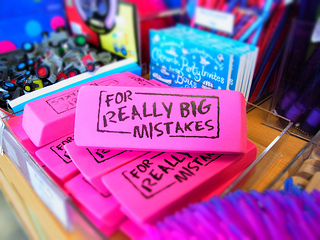
I’m more than a little worried. One of the core foundations of marketing seems to be wobbling, and this wobble is extremely prevalent in the shopper marketing space. My concern? We’re forgetting what an insight is.
As more and more data reaches marketers’ desks you’d think that we’d see more insight, but unfortunately that doesn’t seem to be the case. Across the globe jobs are advertised as “Shopper Insight Managerâ€; yet the job description is more of an analyst’s role – a number cruncher. “Marketers†are so busy crunching the data they don’t seem to have time to be insightful. The word insight is now so misused that perhaps it should be retired, and replaced with some other word which actually means what insight used to mean.
Can there be too much data?
Unfortunately more data does not necessarily mean more insight. Worse: If that data is misinterpreted, taken in its purest form, or there is no ‘overlay’ of insight to understand what that data actually means, then the data is worse than useless: it gives a false sense of security that what I am doing is ‘supported’ by the data.
So what is driving this worrying trend, and what should marketers do about it?
Big Data: digital, social, retail – we have more data than ever before. But crunching through all of that data takes a lot of time. So much time is being spent ‘getting through’ the data, nobody has time to dwell on what it might mean. When we (link to engage) work on projects, we habitually use existing client data or reports that have not been referenced since they were created. Why? Clients were too busy analyzing ‘new’ data!
In this world of data, everything now has to be absolute. Surprisingly people seem to think that if something comes from data, it satisfies this requirement. The data doesn’t lie – true. But the stories we allow the data to support are nothing more than that – stories.
The brilliance of insights is that they aren’t absolute. That is where competitive advantage comes from. It doesn’t come just from crunching data – it comes from the leaps we make from that data – that connect things that are apparently unconnected.
So how to become (or remain) insightful?
Don’t use data as a crutch – It’s OK to make a decision which is not completely supported by data. More than OK – it’s essential to great marketing. If the story is all in the data, then there is almost certainly something missing. Get comfortable with ambiguity. Trust your gut sometimes. Great marketing existed before big data; whilst great marketing often relies on data to some extent, it is not a pre-requisite for great marketing.
Allow time – Staring at charts and tables is an essential part of the insight process – but so is NOT staring at the data. Crunch data to a deadline for sure, but allow insight time to percolate.
Ban the word insight from your business – Until we learn how to use the word properly, at least! Call it an idea, call it a supposition, call it analysis, call it thought. Anything – but not insight, please. When people use the word – ask if that is really what they mean!
Go looking for questions, not answers – Data is crunched to produce an output – to track a trend, to fill in a chart. That’s fine – but sometimes we should look at data with no specific purpose. Ignore the headings the agency might have put on the chart (or better still get a deck that has no headings). Go look at the data tables and just see what you see.
Remember qualitative – Qualitative research isn’t just something we do as a prelude to quantitative work: nor is it something we only do when we can’t afford a full quantitative study (“I can only afford a couple of focus groups…â€). Qualitative research doesn’t always have to be quantified to be valid. It is this qualitative work that often gives us the key triggers needed to change behavior.
Don’t get me wrong. I love data. I really do. When it is used correctly it creates massive value. But it isn’t everything. Analyzing data is not the same as creating insight. Both are valuable – let’s just not get them muddled up. And if your team needs help creating insights – just let me know.
Image: Flickr





